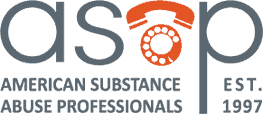By Robert Preidt, HealthDay
“Too many people in our country and in our communities are still dying from opioid-related overdoses,” said Dr. Anne Schuchat, principal deputy director at the U.S. Centers for Disease Control and Prevention. “We must and can do a better job of getting naloxone in the hands of people who really need it, and those likely to be nearby when an overdose occurs.”
The new CDC report finds that too few doctors are prescribing naloxone as recommended to patients taking high-dose opioids or opioids plus benzodiazepines (such as Valium and Xanax), or to those with a substance use disorder.
If every patient with a high-dose opioid prescription were offered naloxone (brand names Evzio and Narcan), nearly 9 million more naloxone prescriptions would have been dispensed in 2018, according to the CDC’s Aug. 6 Vital Signs report.
“Our report has good news and bad news related to both opioid prescribing and co-prescribing of naloxone,” Schuchat said during a Tuesday media briefing on the findings.
“We are making progress in reducing high-dose opioid prescribing, but there is still too much and we are seeing significant increases in pharmacy prescriptions for naloxone, but there is much room for improvement, missed opportunities remain,” she noted.
While there was an overall increase in naloxone dispensing from 2012 to 2018, there were wide variations in naloxone dispensing in pharmacies, despite similarities in state laws.
More needs to be done to increase naloxone access at the local level, according to the report.
The investigators found that rural counties had the lowest dispensing rates in 2018; primary care providers wrote only 1.5 naloxone prescriptions per 100 high-dose opioid prescriptions (an opioid overdose risk factor); and more than half of naloxone prescriptions required a co-pay. Co-pays can keep some patients from accessing the meds.
The report said that the number of naloxone prescriptions dispensed doubled from 2017 to 2018; only one naloxone prescription is dispensed for every 70 high-dose opioid prescriptions; and 71% of Medicare prescriptions for naloxone required a co-pay, compared to 42% for commercial insurance.
In addition, rural counties were nearly three times more likely to have low rates of naloxone-dispensing than metropolitan counties, and naloxone dispensing is 25 times greater in the highest-dispensing counties than the lowest-dispensing counties.
In 2017, over 47,000 Americans died of opioid overdoses. For years, naloxone has been used by emergency medical services, first responders and community-based overdose prevention programs. Meanwhile, efforts are being made to boost access to naloxone through prescribing and pharmacy-based distribution.
CDC director Dr. Robert Redfield said in an agency news release: “It is clear from the data that there is still much needed education around the important role naloxone plays in reducing overdose deaths. The time is now to ensure all individuals who are prescribed high-dose opioids also receive naloxone as a potential lifesaving intervention.”
In addition, Redfield said, “As we aggressively confront what is the public health crisis of our time, CDC will continue to stress with health care providers the benefit of making this overdose-reversing medicine available to patients.”
Preidt, R. (2019). Too few US opioid users are getting OD antidote. Retrieved from https://www.usnews.com/news/health-news/articles/2019-08-06/too-few-us-opioid-users-are-getting-od-antidote

